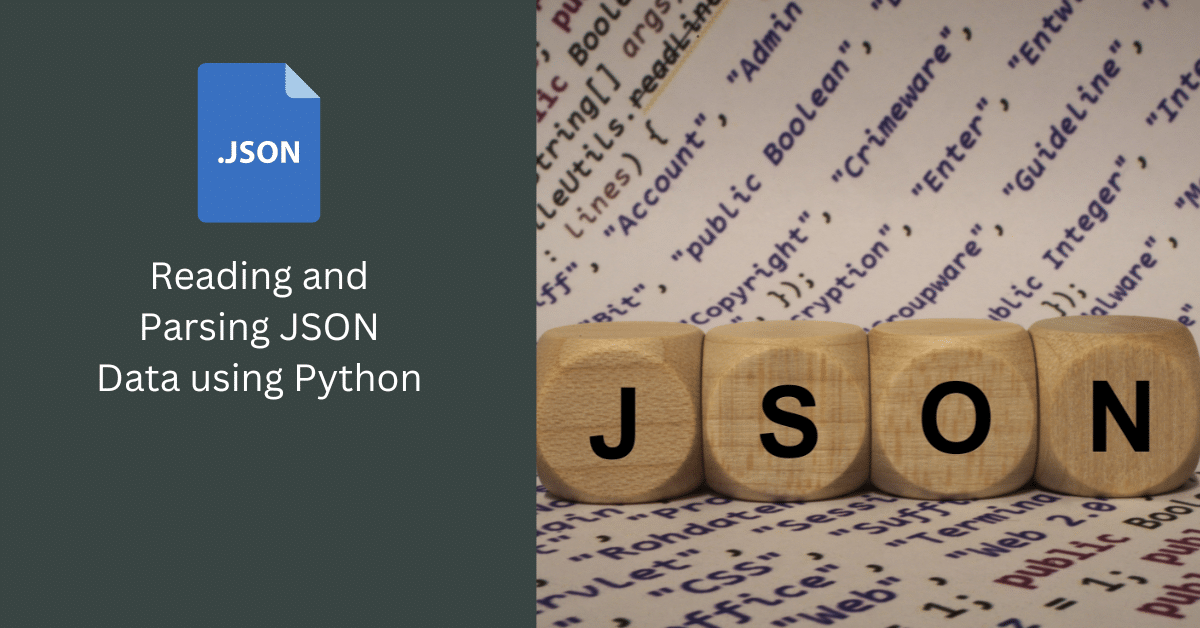
In today’s digital age, data is everywhere, and handling it efficiently is paramount. JSON (JavaScript Object Notation) has become a ubiquitous data format due to its simplicity and compatibility with various programming languages. In this article, we will explore how to read and parse JSON data using Python, a versatile and powerful programming language. Whether you are a seasoned developer or a beginner, this guide will help you navigate the world of JSON data manipulation.

Table of Contents
1. Understanding JSON
JSON, as mentioned earlier, stands for JavaScript Object Notation. It is a lightweight data interchange format that is easy for humans to read and write, and easy for machines to parse and generate. JSON data is represented in key-value pairs, making it highly versatile for storing various types of information.
2. Prerequisites
Before we dive into the world of JSON manipulation, you need to have Python installed on your system. If you haven’t already, you can download it from the official Python website (https://www.python.org/downloads/). Once Python is installed, you’re ready to get started.
3. Reading JSON Data
Python provides several libraries for working with JSON data. The most common one is the json library. You can read JSON data from a file or an online API. Here’s how you can read JSON data from a file:
import json
with open('data.json', 'r') as file:
data = json.load(file)
4. Parsing JSON Data
Once you have read the JSON data into Python, you can parse it to extract information. JSON data can be a combination of dictionaries and lists. You can access specific values using keys or indices.
# Accessing a specific key
value = data['key']
# Accessing an element in a list
element = data['list'][0]
5. Accessing Data in JSON
Accessing data in JSON can sometimes involve nested structures. You can use loops and conditionals to navigate through the data effectively.
for item in data['items']:
if item['status'] == 'completed':
print(item['title'])
6. Modifying JSON Data
Python allows you to modify JSON data easily. You can update existing values or add new ones.
data['new_key'] = 'new_value'
data['existing_key'] = 'updated_value'
7. Handling Errors
When working with JSON data, it’s essential to handle potential errors gracefully. Use try-except blocks to capture and handle exceptions, ensuring your program doesn’t crash when dealing with faulty JSON.
8. Best Practices
To make your JSON handling more efficient, follow these best practices:
- Use descriptive variable names.
- Ensure data validity and consistency.
- Validate JSON before parsing.
- Implement error handling.
- Comment your code for clarity.
9. Real-World Applications
JSON is widely used in web development, data exchange between systems, and configuration files. Learning how to read and parse JSON data in Python opens up various opportunities in these domains.
JSON objects and the Python data types after conversion
In this article, we have explored the fundamental concepts of reading and parsing JSON data using Python. JSON’s simplicity and versatility make it a preferred choice for data interchange in various applications. With the knowledge gained here, you are well-equipped to work with JSON data in your Python projects.
When working with JSON data in Python, it’s important to understand how JSON objects map to Python data types after conversion. Here’s a brief overview:
JSON Objects to Python Dictionaries:
JSON objects, which consist of key-value pairs, are typically converted to Python dictionaries. Each key in the JSON object becomes a string key in the Python dictionary, and the corresponding values are converted to their respective Python data types (e.g., strings, numbers, booleans, nested dictionaries, or lists).
For example, consider a JSON object like this:
jsonCopy code
{ "name": "John", "age": 30, "is_student": false }
After conversion to Python, it becomes a dictionary:
pythonCopy code
{ "name": "John", "age": 30, "is_student": False }
JSON Arrays to Python Lists:
JSON arrays, which are ordered lists of values, are typically converted to Python lists. The values within the JSON array are converted to their corresponding Python data types. These lists can contain a mix of data types, including other lists or dictionaries.
For example, consider a JSON array like this:
jsonCopy code
[1, 2, 3, "apple", "banana"]
After conversion to Python, it becomes a list:
pythonCopy code
[1, 2, 3, "apple", "banana"]
Null Values in JSON to Python’s None:
In JSON, null values are represented as null. When converting JSON to Python, null is typically converted to Python’s None value.
For example, consider JSON with a null value:
jsonCopy code
{ "name": null, "age": 25, "city": null }
After conversion to Python:
pythonCopy code
{ "name": None, "age": 25, "city": None }
Boolean Values Remain the Same:
JSON uses true and false for boolean values. When converting to Python, these values are directly mapped to True and False (note the capitalization).
Numbers:
JSON numbers are usually converted to their Python numeric types, such as int or float, depending on the format of the number in JSON.
Nested Structures:
JSON can have nested structures, including objects within objects or arrays within objects. These nested structures are recursively converted to nested dictionaries and lists in Python.
For example, consider JSON with nested objects:
jsonCopy code
{ "person": { "name": "Alice", "age": 28 } }
After conversion to Python:
pythonCopy code
{ "person": { "name": "Alice", "age": 28 } }
Understanding how JSON data maps to Python data types after conversion is crucial when working with JSON data in Python, as it allows you to access and manipulate the data effectively within your Python programs.





